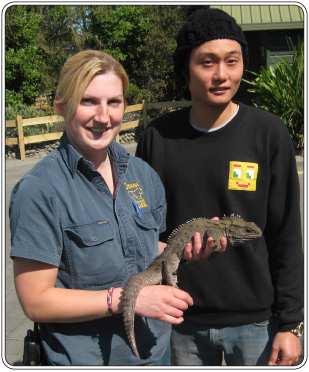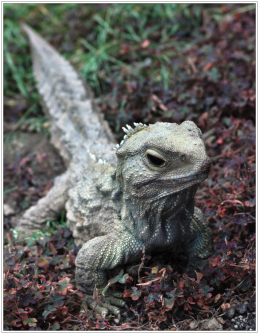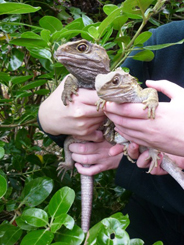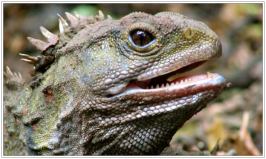Conservation of the Tuatara
Tuatara Tours are proud to be actively involved in Tuatara Conservation.
We have formally adopted “BP”, a male juvenile tuatara who resides at Orana Park in Christchurch and is part of the conservation programme to ensure the safe future of these amazing reptiles.

TUATARA, WHAT ARE THEY?
Often called a “living fossil”, the Tuatara’s dinosaur relatives died out 60 million years ago. They are among the most primitive living reptiles, having undergone few evolutionary changes in anatomy during the past 200 million years. Biologists classify them in an order of its own having an equal rank to the turtles, crocodilians, lizards and snakes.
Tuatara are members of a unique group called Sphenodontia.
Sphenodontia roamed the earth during the age of the dinosaurs about 200 million years ago and Tuatara are the only survivors of that group. In the teaching about ancient life forms Tuatara are therefore of huge international interest.
TUATARA, WHERE ARE THEY FOUND?
They live in sanctuaries on Stephens Island in Cook Strait and other islands in the Marlborough Sounds as well as islands in the Hauraki Gulf, off Northland, the Coromandel Peninsula and the Bay of Plenty.
When Europeans arrived in NZ, Tuatara were found only on offshore islands. These islands are occupied by colonies of breeding seabirds whose presence greatly attributes to the number of food sources for the Tuatara.
There is estimated to be around 100,000 surviving Tuatara and they only survive on islands that are free of introduced predators.


TUATARA, WEIRD AND WONDERFUL FACTS
Scientists have found that some tuatara populations have very skewed sex ratios with many more males than females. They suspect this could be because of rising temperatures and are concerned that global warming could potentially cause the extinction of tuatara. Once a population has too many more males than females, not enough young can be produced to replace old animals that die and extinction is inevitable.
Further research is being conducted to determine if tuatara will be able to somehow adapt to a warmer climate, or if more drastic management measures will be needed to protect the species.
TUATARA, WHERE CAN I SEE THEM?

